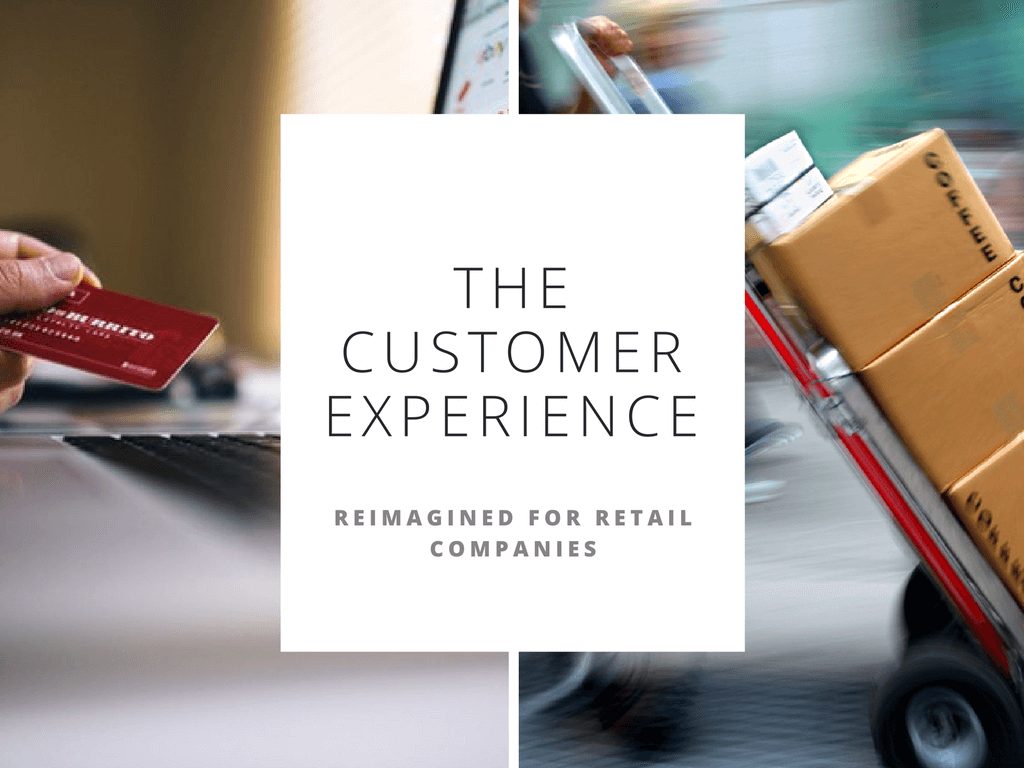Reimagining the Customer Experience for Retail Companies

In a 2016 Marketing Week survey, 83% of marketers said they “believe customer experience is now more central to their role than it was five years ago.”
Today, CMOs and retail marketers realize that the customer experience matters. They understand that customers want to enjoy more than just your products and services and are changing their marketing strategies to reflect these findings.
Here are some examples of how marketers are improving their customer experiences.
Learn How The Customer Experience Affects Your Brand
Failing at the customer experience can have a significant impact on branding.
Mishaps waste your team time and money. Plus, distraught retail customers will buy from competitors and talk negatively about your brand.
According to a MarketingSherpa survey, 22% of consumers stop recommending products altogether after a bad customer experience.
Moreover, a whopping 42% of surveyed customers actually sought brand competitors and even disparaged the brand via word-of-mouth or social media.
Then, take the example of British Airways. In the past, British Airways has been under fire for its poor customer experience. After the airline failed to timely respond to a customer online, the consumer actually paid to promote a negative tweet about the brand.
|
|
Len Markidan, head of marketing at Groove, says, “Just because you can grow your business without a deep focus on customer experience, doesn’t mean that you should.”
Developing a remarkable customer experience is profitable. Customers who had the best past experiences with brands spent 140% more compared to those with the poorest past experiences. They also are more likely to make favorable referrals.
|
|
Key Takeaways:
Good and bad customer experiences impact your business. Avoid situations that would disappoint your customers. Additionally, evaluate your data to find opportunities to improve. Make it a team effort that includes every function of your retail business.
What Retail Marketers Can Do
-
Ask for customer feedback via surveys and polls.
-
When consumer issues occur, go above and beyond to rectify the problem quickly.
Great Customer Experience Isn’t Always Fancy
Great customer experiences aren’t necessarily the result of retail companies spending exorbitant amounts of money. Instead, great customer experience comes from fulfilling the needs that originally led the customer to your product.
Delivering a worthwhile customer experience reduces the cost to your business. Dissatisfied consumers require extra customer support, like assistance with refund requests.
A five-year Harvard Business Review study found that most customers don’t want to be delighted and wowed by a brand. They simply want the brand to deliver on their product promises.
For example, Zappos—a company highly respected for its customer service—achieves this goal by offering customers a straightforward process of discovery, purchase, and delivery. The retailer also makes it easy to return unwanted items.

Fritz Lehman, executive vice president and chief customer officer at SAS, offers the following advice: “While technology can make a company seem cutting edge or trendy, it won’t show customers that your company has a heart. That only comes from meaningful interactions with people. It’s the human touch that makes the biggest difference when it comes to customer experience.”
Key Takeaways:
Efficiency and simplicity are the valued qualities sought after by retail consumers. Siegel + Gale revealed that companies most focused on frictionless experiences saw the most brand benefits.
This is why brands should make a conscious decision to create effective customer service processes.This includes tracking customer responses times, conducting quality assurance checks, and measuring customer satisfaction.
For example, Walmart is attempting to improve its customer service by opening 200 training academies. Employees will receive live classroom instruction as well as on-the-floor training.
This is why brands need to also move beyond fancy marketing tactics. Just give customers what they desire: a memorable shopping experience.
What Retail Marketers Can Do
- Humanize your brand to engage directly with customers.
- Deliver on your initial product promises.
Evaluating Customer Needs
Gain insight to learn about your customers’ needs. It’s one of the best ways to enhance the customer experience.
Buyer personas are a great way to identify gaps within your customer experience strategy. Design a plan that targets those specific behaviors.
Then, use customer feedback to enhance buyer personas. Authentic feedback will help establish a baseline for problems commonly faced by customers.
For instance, Stitch Fix, a personal styling service, uses extensive customer profiles matched with big data to generate a recommended product list.

Case studies found that “buyer personas added a 171% increase in marketing-generated revenue, a 111% increase in email open rate, and a 100% increase in the number of pages visited.”
Kevan Lee, director of marketing at Buffer recommends developing three to five unique personas. Below is an example of a simple buyer persona.
|
|
Key Takeaways:
While most retail companies avoid buyer personas, it’s necessary if you want to serve your consumers properly.
“Untargeted marketing tries to target both everyone and no one in particular. When you have identified your buyer persona, you can use the language they used to and provide a solution that seems tailor-made to their needs,” writes Forbes contributor Charles E. Gaudet II.
Investing in a customer intelligence platform is helpful to collect and store data. Plus, your team can anticipate changing customer preferences and identify opportunities in real-time.
What Retail Marketers Can Do
- Conduct research to learn about your customers’ behaviors, habits, and lifestyles.
- Create impactful content, like videos and product descriptions, that solves your consumers’ needs.
Consistency Across The Customer Journey
Research unveiled that “87% of customers think brands need to put more effort into providing a consistent experience.” This means providing the same customer experience across all channels.
“The customer journey involves many touchpoints, you’re job is to ensure all of your team know the overall message you want to deliver. You can’t have half of your team offering a high level of service and the other half offering none,” says Ross Beard, former marketing manager at Client Heartbeat.
For example, email is an especially valuable touchpoint to connect with your target audience. It’s an opportunity to send retail consumers welcome messages, product updates, and promotions.
“Email marketing creates a good first impression,” says Matthew Kinsman, founder of branding agency Base Create. “It shows professionalism, commitment to the business, and credibility.”
Online clothing retailer, Everlane, offers sleek, modern emails to welcome its newest customers. It matches the brand’s overall tone of simplicity.
|
|
But for brand consistency to work in your email campaigns, it must be present in your customer service, website copy, and social media accounts.
Check out the diagram below. Which touchpoints are included in your customer journey?
|
|
Disney offers its consumers consistency no matter the channel. Guests can purchase trip packages via a website.
Then, customers can use the My Disney Experience tool to manage hotel and dining reservations. And guests have access to a mobile app to locate park attractions.
Key Takeaways:
Consistency is a vital element to your overall marketing success. Email is a valuable touchpoint, but it is important to identify all your customer touchpoints.
What Retail Marketers Can Do
- Link all your customer touchpoints together to create a streamlined experience.
- Cross-promote similar product information on different channels.
Customer Experience Matters
Increase your retail company’s bottom line. Offer great customer experiences through content marketing.
Keep your customer interactions simple. Take advantage of buyer personas. And provide consistency across all consumer touchpoints.

















